![]()
I have a youtube channel with over 1000 Project Videos!

Hi, Thanks for visiting my website. My name is Will and if you have questions
or would like to
contribute projects or ideas you can contact me 

![]()
I have a youtube channel with over 1000 Project Videos!

Hi, Thanks for visiting my website. My name is Will and if you have questions
or would like to
contribute projects or ideas you can contact me 
This is a leeuwenhoek microscope named after a Scientist who lived from 1632 - 1723). He is considered to be the father of microbiology and he made some amazing advances in the creation and development of early microscopes. You can easily make a leeuwenhoek microscope with just a paper clip and a drop of water.
Return to the Main Science Project Idea page here
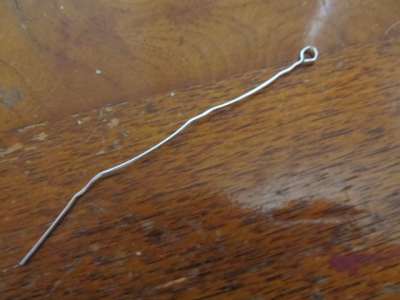
The picture above shows the Leeuwenhoek microscrope that you can make from a paper clip. This one magnifies between 2 and 3 times.
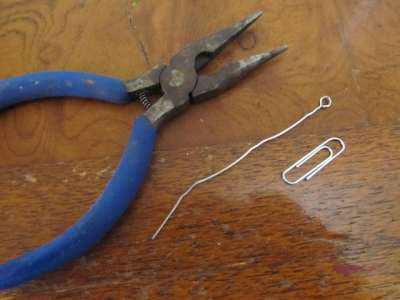
All you need is a paper clip and some kind of tool to bend it with. I am using a pair of needle nose pliers but you can use just about anything. Just bend the end of the paper clip so it forms a nice circle. Get it as round as possible and make it about an eighth of an inch.
You can tinker with the size of the circle to try to get different magnifications.
Once you have the circle nice and round rub some butter or oil on it. You don't want to fill the circle with the oil or butter. You want to lubricate the metal and coat it. This will cause the drop of water to stick to it very nicely.
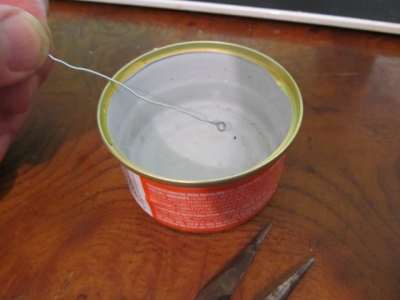
Now dip it in water and when you pull it out it will have a nice drop of water in it.
There you go. This picture belowshows the microscope magnfying one of the little diamonds on the pattern. Looks to me that it is easily 2 to 3 times magnification. You can adjust this magnification by moving the microscope closer or further aways.
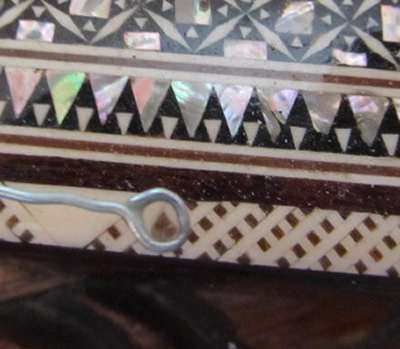
Have fun with it! Make a bigger one and see how it work. Be sure to look at it different ways by moving your eye closer or further away from it. And be sure to work in a well lit area!
About Leeuwenhoek:
He is considered to the be father of microbiology and was the first person to observe single cell organisms which he called animalcules. We now call them microorganisms. He was a talented glass blower and he discovered a way to make small spheres of glass that were very high quality. These small spheres of glass magnified objects when you looked through them so he built microscopes around them.
The project you make here with the paper clip is very similar except that instead of a sphere of glass we make a sphere of water.
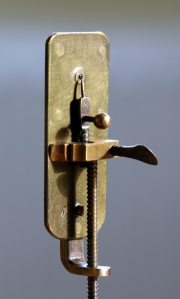
Here is a picture of a leeuwenhoek microscope. You can see the small glass sphere near the top. Picture credit: Jeroen Rouwkema
Using the Leeuwenhoek Microscope:
Now have some fun with it. Grab a pencil and a pad of paper and do some drawings of what you see. Try looking at various liquids and if you can, get some rain water or puddle water.
Experimenting with the idea of this microscope
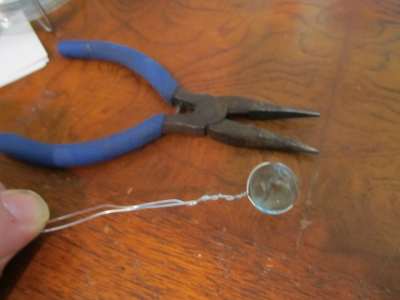
We looked at how Leeuwenhoek made his microscope using little glass spheres. Well you might have some of these spheres that could work very well.
Yup, a clear marble works pretty good. It will usually magnify much more than 2 -3 times.
And typically to use it you hold it very close to the objects you are looking at and you have to bring your eye very close to the marble.
The picture here shows a marble microscope I made. I simply made a handle out of some wire. A couple of small dots of super glue hold it in place.
Things to do with your microscope
You should get yourself a notebook. Draw pictures and take notes about what you see. And try different types of liquids to look at. Try rain water or pond water. Try tap water. There are lots of things you can examine and you can make some terrific discoveries.
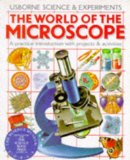
The World of the Microscope (Science & Experiments Series)
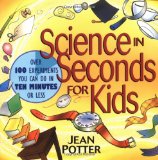
Science in Seconds for Kids: Over 100 Experiments You Can Do in Ten Minutes or Less History of Technology Books)
Make lightning in your room! Keep paper dry under water! Lose weight by going upstairs! See colors that aren't there! Experience the magic of science with these quick, easy experiments and activities from Jean Potter. You can complete each activity in ten fun-filled minutes or less. Clear, step-by-step instructions and illustrations help you get it right every time. The projects help you learn about everything from why eggs aren't round to how submarines surface and submerge. You will find most of the required materials already in your home, backyard, or neighborhood, and you can perform the experiments practically anywhere. The 108 activities in this book cover twelve different subject areas, including air, animals, energy, gravity, magnetism, light, the human body, and much more. You'll make a rainbow right on your floor, pop a balloon with a magnifying glass, make a coffee can roll back to you after you've pushed it away, and bend water as it streams from your faucet--all with the help of a leading educator. Children Ages 8-12
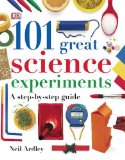
Science writer Neil Ardley shows how you can use everyday objects to explore the basic principles of science with 101 exciting step-by-step experiments that are safe and easy to do at home.
Do you like making projects and exploring a variety of hobbies?
Sign up for my free newsletter. I give you regular updates on hobbies and projects you can make. it is totally free and I don't share your email with anybody.